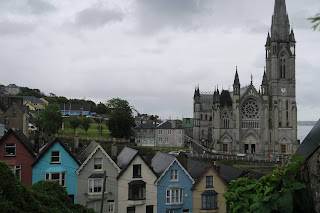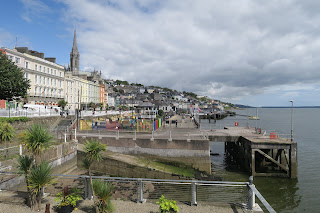In 1849 Cobh was renamed Queenstown after Queen Victoria paid a visit. The name lasted until Irish Independence in 1921 when it reverted back to the Irish original name. The world’s first yacht club, the Royal Cork Yacht Club, was also founded here in 1720. Cobh is dotted with brightly coloured houses and overlooked by a splendid cathedral.
Statue on the waterfront of Annie Moore and her brothers. Annie Moore was the first person to be admitted to the United States of America through the new immigration centre at Ellis Island, New York in 1892.
From this vantage point, the anchorage of the Titanic is just visible. The adjoining 23 houses that led from here to the bottom of the hill are built in an ascending stack on 23 different levels. They are known locally as ‘The Pack of Cards’
Looking out into Cork Harbour
The Sirius Arts Centre is a hub for the arts in Cobh and is located on the waterfront. It hosts cultural events and music concerts
Dramatically perched on a hillside terrace above Cobh, St. Colman’s Cathedral is out of proportion to the town. Its most exceptional feature is the 47-bell carillon, the largest in Ireland, with a range of four octaves. The largest bell weighs a stinking 3440kg!! The cathedral was begun in 1868 but not completed until 1915.
Another car ferry ride across Cork Harbour took me from Carrigaloe to Passage West on my way to my next destination...Kinsale.
.



























































